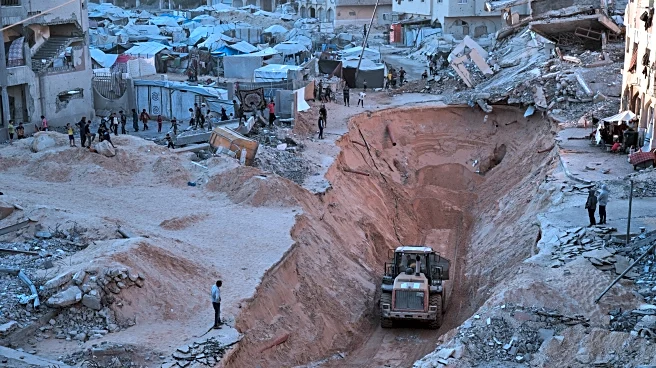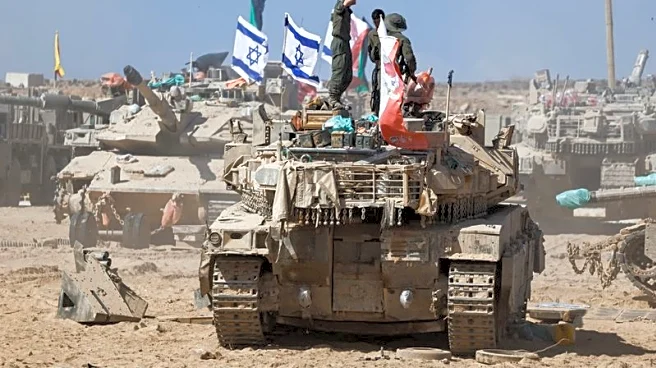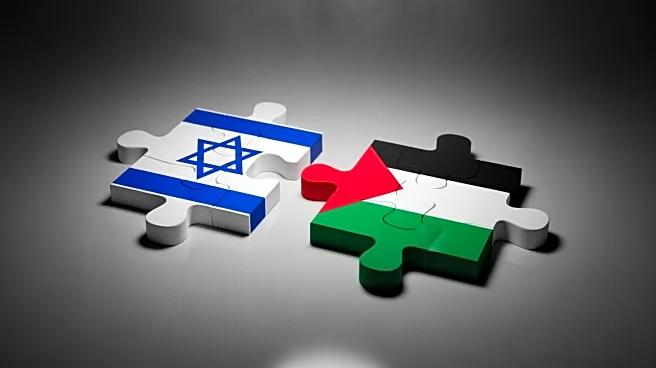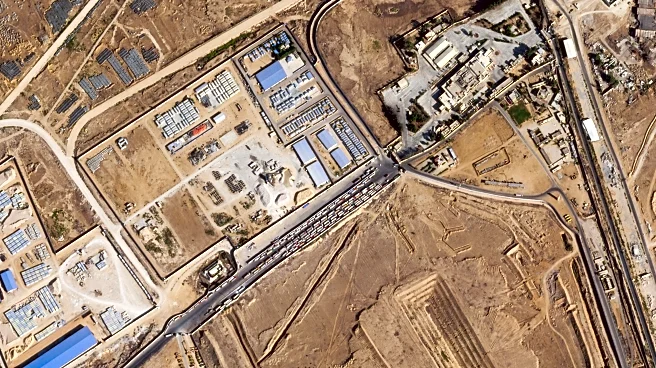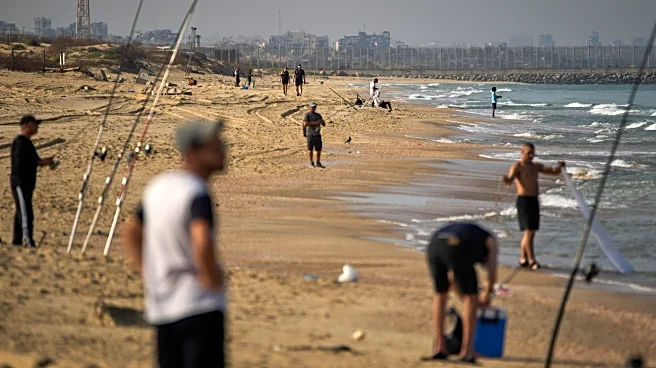What's Happening?
The Israeli military has received the body of a hostage from Hamas, as part of a US-brokered ceasefire agreement that began on October 10. This development follows the handover of 20 living hostages and 12 deceased hostages by Hamas. The body was transported
by the Red Cross to Israeli forces in Gaza and has been returned to Israel for formal identification. The ceasefire deal also involved Israel releasing 250 Palestinian prisoners and 1,718 detainees from Gaza, along with the return of 15 Palestinian bodies for each Israeli hostage's remains. Despite the ceasefire, violence erupted on Sunday with both sides accusing each other of breaching the agreement.
Why It's Important?
The return of the hostage's body is a significant step in the ongoing ceasefire negotiations between Israel and Hamas. It highlights the complexities and challenges in the peace process, as both sides have accused each other of violating the ceasefire. The exchange of prisoners and hostages is a critical component of the agreement, aiming to reduce tensions and foster a more stable environment. However, the recent violence underscores the fragility of the truce and the potential for further conflict, impacting regional stability and international diplomatic efforts.
What's Next?
The continuation of the ceasefire and the successful implementation of the agreement's terms are crucial for maintaining peace. Both Israel and Hamas are expected to adhere to the ceasefire conditions to prevent further escalation. International stakeholders, including the United States, will likely continue to monitor the situation closely and may intervene if the ceasefire is threatened. The focus will be on ensuring that all hostages and prisoners are returned as agreed, and that humanitarian aid reaches those in need in Gaza.


